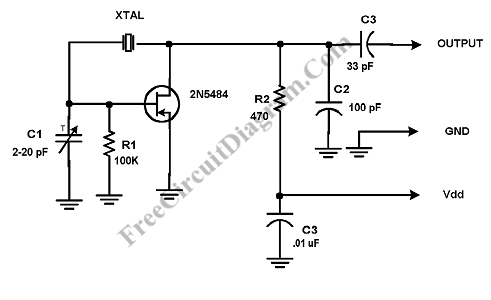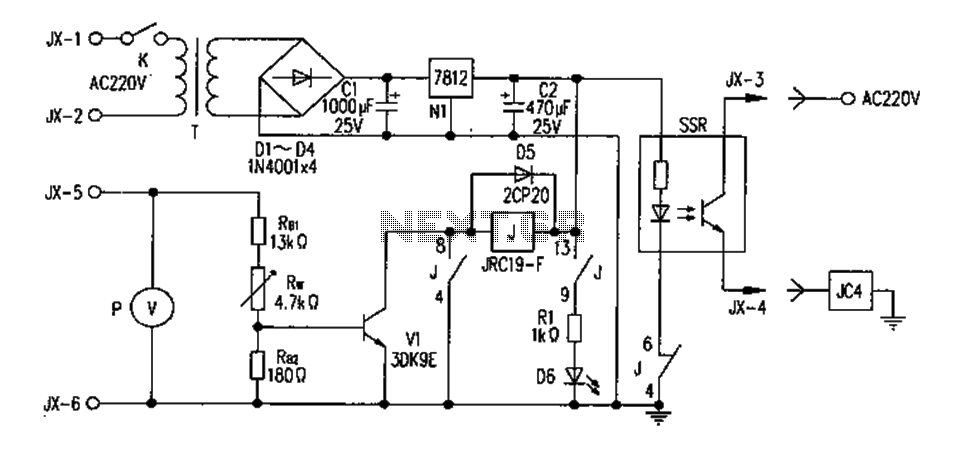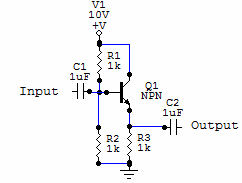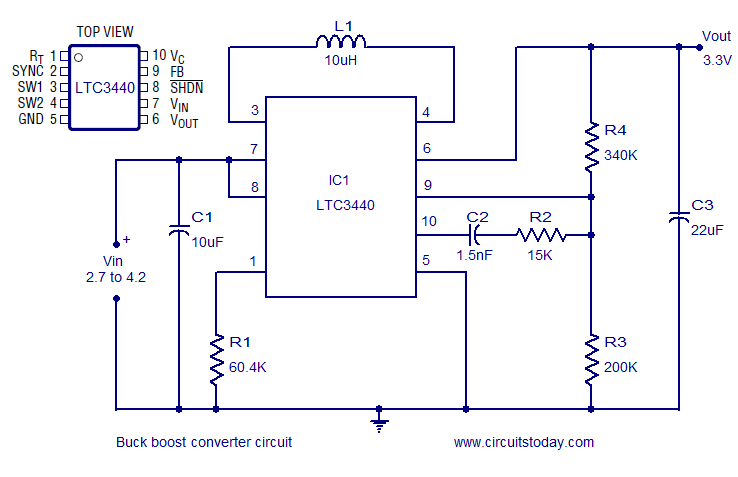
5V FET Voltage Regulator
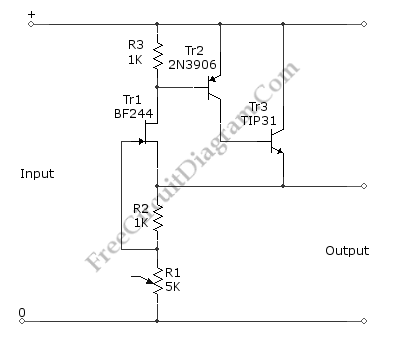
This voltage regulator circuit provides a stable 5V output from unregulated inputs that are greater than 5V. The output voltage stability is satisfactory, with minimal variations.
The voltage regulator circuit utilizes a linear voltage regulator, such as the LM7805, which is designed to maintain a constant output voltage despite fluctuations in the input voltage or load conditions. The circuit typically includes input and output capacitors to enhance stability and transient response.
The input capacitor, often a 0.33 μF ceramic capacitor, is connected between the input pin of the regulator and ground. This capacitor helps to filter out high-frequency noise from the power supply and provides a stable input voltage to the regulator. The output capacitor, usually a 0.1 μF ceramic capacitor, is connected from the output pin to ground, which aids in improving transient response and stability of the output voltage.
To set up the circuit, the unregulated input voltage (greater than 5V) is connected to the input pin of the regulator. The output pin is connected to the load that requires a stable 5V supply. The ground pin of the regulator must be connected to the common ground of the circuit to ensure proper operation.
In addition to these components, it is advisable to include a heat sink on the regulator, especially if there is a significant voltage drop from the input to the output, which can generate heat. The performance of the circuit can be further enhanced by ensuring that the regulator operates within its specified input voltage range and load current limits to avoid thermal shutdown or damage.
Overall, this voltage regulator circuit is suitable for various applications requiring a stable 5V power supply, such as powering microcontrollers, sensors, and other electronic devices.This voltage regulator circuit gives a stable 5V output from unregulated inputs (more than 5V). The stability of the output voltage is good enough, only change. 🔗 External reference
The voltage regulator circuit utilizes a linear voltage regulator, such as the LM7805, which is designed to maintain a constant output voltage despite fluctuations in the input voltage or load conditions. The circuit typically includes input and output capacitors to enhance stability and transient response.
The input capacitor, often a 0.33 μF ceramic capacitor, is connected between the input pin of the regulator and ground. This capacitor helps to filter out high-frequency noise from the power supply and provides a stable input voltage to the regulator. The output capacitor, usually a 0.1 μF ceramic capacitor, is connected from the output pin to ground, which aids in improving transient response and stability of the output voltage.
To set up the circuit, the unregulated input voltage (greater than 5V) is connected to the input pin of the regulator. The output pin is connected to the load that requires a stable 5V supply. The ground pin of the regulator must be connected to the common ground of the circuit to ensure proper operation.
In addition to these components, it is advisable to include a heat sink on the regulator, especially if there is a significant voltage drop from the input to the output, which can generate heat. The performance of the circuit can be further enhanced by ensuring that the regulator operates within its specified input voltage range and load current limits to avoid thermal shutdown or damage.
Overall, this voltage regulator circuit is suitable for various applications requiring a stable 5V power supply, such as powering microcontrollers, sensors, and other electronic devices.This voltage regulator circuit gives a stable 5V output from unregulated inputs (more than 5V). The stability of the output voltage is good enough, only change. 🔗 External reference
